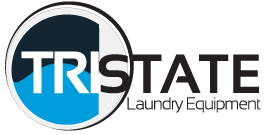To ensure the plant ran properly, I had to calculate the steam requirements accurately, so I began by referring to all the manufacturers specs for each piece of equipment. Then, I could take the boiler horsepower required and determine the pounds of steam per hour required and size the steam supply and return headers.
This plant's boiler requirement of 75 horsepower led me to suggest to the owners that they install two boilers, a Parker Boiler 105-70 H.P and a Parker Boiler 104-50 H.P. I know you’re adding this up, and it's greater than the 75-horse requirement I stated earlier. That's because the 70 H.P will provide the needed steam to operate the plant on most any given day. Adding the 50 H.P and setting the on-off limits will have it fire only when the 70 falls a little behind.
Here’s the logic behind my recommendation:
- We can almost get enough BTU’s out of a stack economizer on the 70 H.P. to heat all their shirt laundry water with a storage tank and circulating pump.
- Hot water generated from a stack economizer is truly free energy because you have paid for it, and it’s on its way out of the stack. Why not harness all that energy?
- The 70 will be the master and carry most of the load. We want it on and firing on high as much as possible to carry the load and make hot water. Additionally, flue gas heat exchangers don’t make a lot of ROI unless your boiler is 50 H. P. or higher. You simply can’t get enough BTU’s to do the job.
- One issue with this type of water heating system is that it’s making hot water the entire time the boiler is firing, and if you don’t have the demand, your storage tank weeps or pops off due to overheating. Then you have wasted water down the drain, giving up your free BTU’s. The 50 H.P comes in when, in the afternoon, they no longer have the demand to make hot water while perhaps finishing up some shirts or running dry cleaning for the next day. They can turn off the 70 and finish up with the 50.
- They will also just use the 50 on Saturdays to run dry cleaning machines only and maybe press some dry cleaning for a head start on the week.
- The steam header is also designed with valves for the header to separate the high-pressure and low-pressure sides allowing them to open or close for fewer loads and not building steam pressure throughout the plant and wasting energy. Of course, this would be done using the 50 H.P because boiler requirements are low and there is no need for hot water.
- One final detail that I consider to be very important but almost always overlooked or misunderstood is when designing steam headers, you should slope the supply and return so the system drains the condensate, and it is pushed by pressure on the return side. A slope helps it drain completely after shutdown, avoiding corrosion and hammering on startup. Parker Boiler engineers recommend 1” every 20’.



